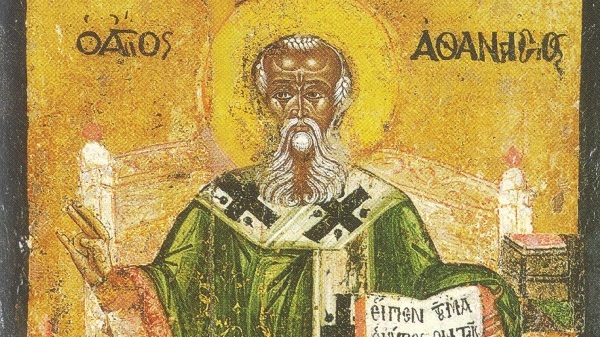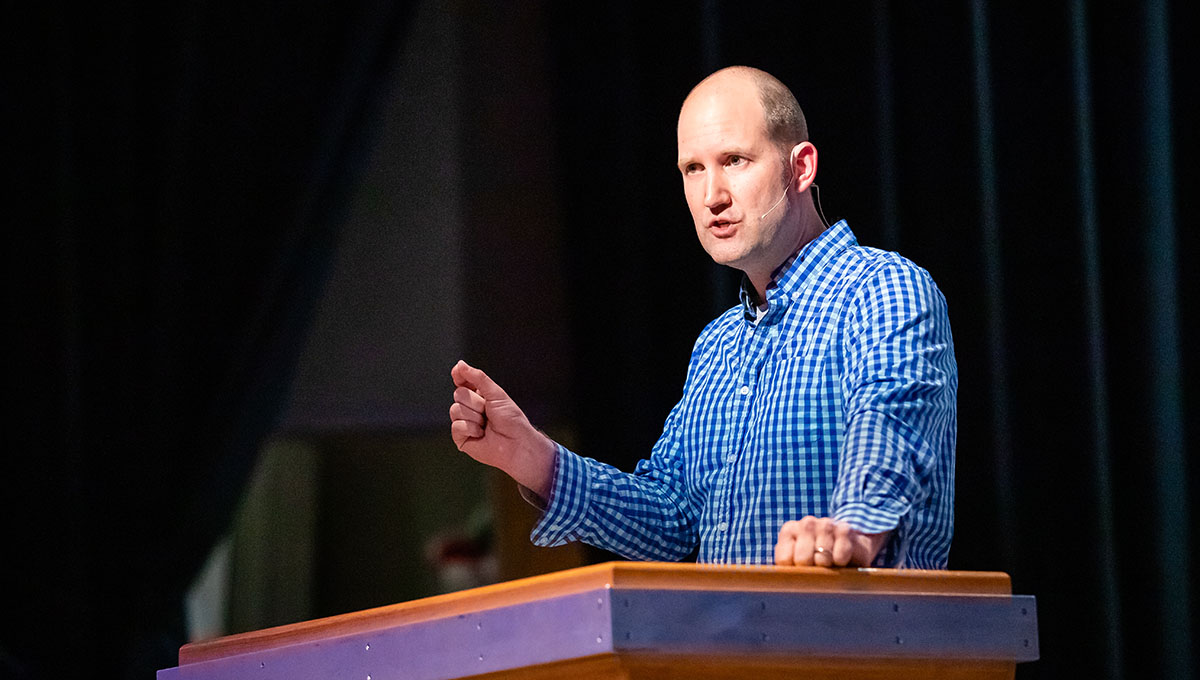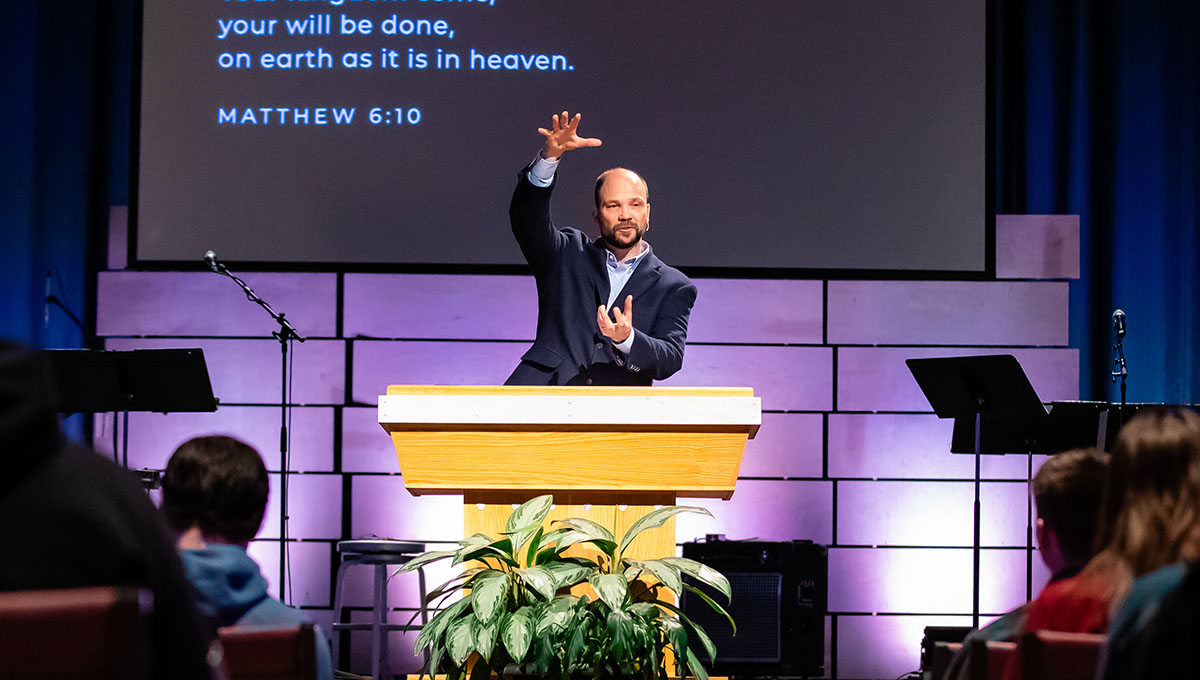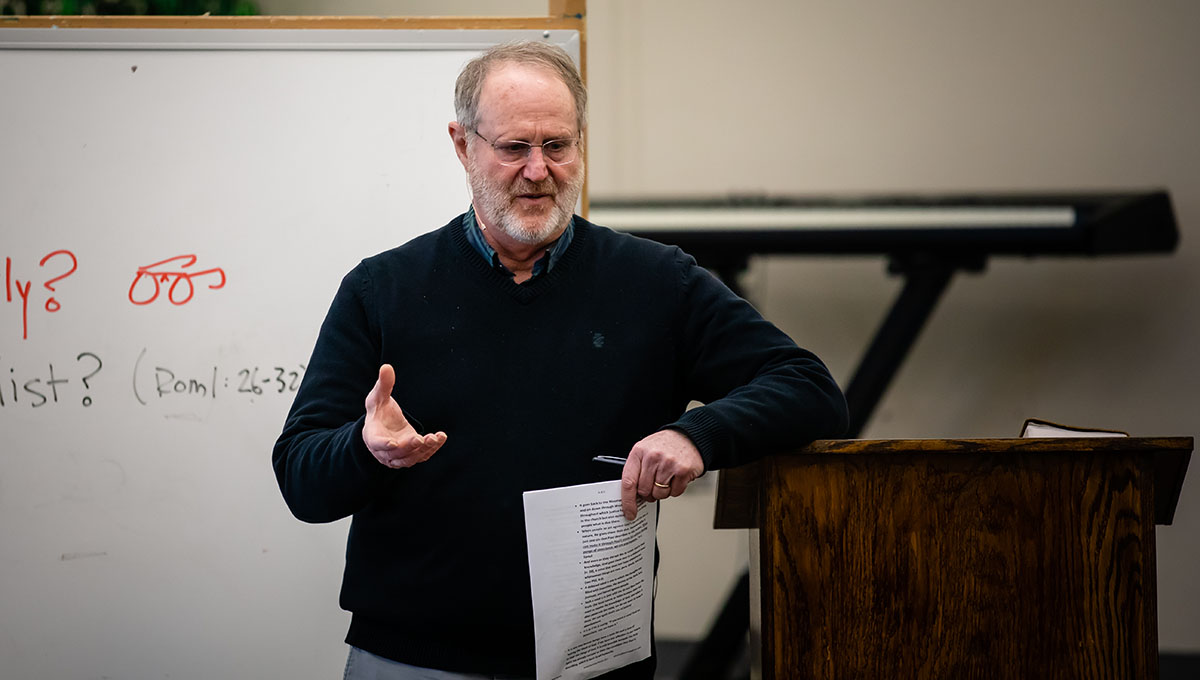One Man Against the World
- Cody Plesnar

Throughout church history Satan and his demons have mounted many attacks against God’s children. From flat out denial to crafty subterfuge, Satan has many tricks up his sleeve. Thankfully, his tricks stand no chance against Christ’s building of His church (cf. Matt 16:18). A study of church history shows Satan surrounding the men and women of God with the beasts of false doctrine, but those under the power of the Holy Spirit prevail and persevere to the end. Today’s Christian is indebted to the men and women throughout the centuries who have upheld sound doctrine and forged their lives with the Truth. They often bore up under grievous persecution and sometimes it seemed as if the world was against them. One such man is Athanasius.
Much of the birth and boyhood of Athanasius is shrouded in mystery. His birthplace is suspected to be Alexandria, the city where he spent most of his life as a servant of his Lord, Jesus Christ. First, he served as a secretary to the well know archbishop, Alexander of Alexandria. Eventually he replaced Alexander’s post as archbishop to the church of Alexandria. Of interest, this church traces its roots back to Mark, the close associate of the Apostle Peter. The same Mark who wrote the gospel which bears his name and who afterwards found himself as a missionary in North Africa. It is suspected that Athanasius was born and raised in a Christian home and was well educated, but this too is unconfirmed. Our focus here is with his timeless example of fortitude under persecution that has preserved his spot in history. His fight for the deity of Jesus Christ is what he is most remembered for.
Whatever training and convictions Athanasius had from his youth were further refined when he became the secretary, sometimes referred to as a deacon, to Alexander of Alexandria. It is likely that Alexander recognized Athanasius’ mental acuity and biblical prowess and scooped him up as a secretary. It was as the bishop’s secretary that Athanasius made his first lasting impression upon the theological world and church history.
Every story of a great hero must also include a great antagonist. In Athanasius’ case this was Arius. Arius was a pastor of an influential church in Alexandria and did not believe in the full deity of Jesus Christ. Instead, he believed that the second person of the Trinity was a lesser created god who was higher than humanity but inferior to God the Father. Arius summed up his teaching in the following two ways: “There was once when Christ was not” and “The Son has a beginning, but God is without beginning.” The second was a half-truth, better described as a full lie, but nonetheless it uses a form of intellectual sleight of hand putting a false claim next to a true claim in order to conceal the false claim. Of course, Arius fully believed his claim, but this serves to show how Satan slips heresy into orthodoxy.
The Arian heresy was combatted at the Council of Nicea (325). The council was called by the Emperor, Constantine the Great, and convened at his summer palace in Nicaea. Nicea is a picturesque lake front town located in modern day Iznik, Turkey. Here Athanasius played a pivotal role in formulating the Nicean Creed’s language to defeat Arianism. Much can be said about the Council of Nicea but suffice it to say that the major issue at hand was maintaining the orthodox view of the person of Jesus Christ. Individual motivations for the council varied greatly. Some came only to defeat their theological enemies while others, specifically Constantine the Great, had primarily peace and unity in mind regardless of the theological outcome. Ultimately, orthodoxy won the day and Arianism was deemed a heresy at the Council of Nicea, but the battle for the deity of Christ was far from over. Indeed, taking into consideration the heretical cult of the Jehovah Witnesses, it can be said that the battle still rages.
Soon after the completion of the Council of Nicea Alexander of Alexandria fell ill and died. On his deathbed he called for Athanasius to appoint him as the next archbishop of Alexandria but Athanasius was nowhere to be found. The reason for this is debated but most likely Athanasius knew the likelihood of his appointment and looked to avoid this heavy responsibility. After all, he was only a thirty-three year old deacon at the time. This reveals a little of Athanasius’ character. While bold in his convictions and understanding of Scripture, Athanasius was a humble man who recognized his weaknesses. While the responsibilities as the archbishop in the intellectual capital of the Eastern Roman Empire (Alexandria) undoubtedly weighed upon the heart and mind of Athanasius, he was nonetheless the epitome of meekness. As archbishop, Athanasius enjoyed a short time of peace leading the Alexandrian Churches, but an impending storm loomed off the coast of North Africa.
Over time, Constantine the Great, influenced by his sister and an Arian presbyter in Rome, became sympathetic to the false doctrine of Arianism. Motivated by peace and unity, Constantine pressured Athanasius by way of letters to accept Arius back into the church. Athanasius refused and the pressure continued until eventually his character came under attack. Amazingly, he was accused of murder and dismemberment by his opponents. Perhaps even more amazing is the fact that Constantine the Great entertained the possibility of this accusation even after seeing Athanasius’ character in action at the Council of Nicaea. This is only a meager sample of the pressure and persecution that Athanasius experienced leading up to his first of five exiles.
His first two exiles were spent in cities in the Western Roman Empire, one of which was Rome. These exiles were decreed by Constantine the Great, a sympathetic and kind Emperor. Athanasius was treated kindly but was physically removed from his position as Archbishop of Alexandria. The other three exiles came under the rule of Constantine’s sons and Athanasius had to flee from persecution in order to preserve his life. The third came with grave loss of life. Athanasius’ enemies, appointed by Emperor Constantius (one of Constantine the Great’s sons) searched him out in Alexandria eventually surrounded a church he was in. As the commotion grew outside the church’s locked doors Athanasius remained calm. He ordered that the 136th Psalm be read. An elder read and the congregation responded with “his steadfast love endures forever,” the second half of each verse in 136th Psalm. Eventually his enemies broke through the church doors wielding weapons and slaughtering of any in their way. It is uncertain how Athanasius escaped but this confrontation lead to his third exile to the deserts of Egypt.
His fourth exile also came because of pressure from the Emperor. This exile also took place in the wilderness but closer to the shores of the Nile River. Perhaps Athanasius chose to hideout in the Nile region after having had enough of the dry desert during his third exile. It is presumed that during his third or fourth exile Athanasius gained an appreciation for the monastic lifestyle and met a monk named Antony. Antony became his close friend and became famous in his own day because of Athanasius. His legacy lives on because of Athanasius’ work The Life of Antony, written because Athanasius was so impressed with Antony’s discipline and simple lifestyle of faith.
His fifth and final exile was also due to external pressure from the Empire but only lasted a few months. Interestingly enough, Athanasius hid in his father’s tomb during his final exile. When the pressure form the Empire subsided Athanasius returned to his post as Archbishop and served the remaining of his days in relative peace.
Of Athanasius’ forty-five years as Archbishop of Alexandria he spent seventeen in exile. Each one of his five exiles represented either a change in the ecclesiastical atmosphere or a change of Emperor. What did not change was Athanasius’ commitment to sound doctrine, specifically the deity of Christ. Despite his absence of seventeen years over five exiles, his flock in Alexandria remained faithful to him and embraced him every time he returned showing how unbreakable true unity is when it is based upon Jesus Christ and His truth revealed in Scripture.
Athanasius tenaciously held to the deity of Jesus Christ while not suppressing His humanity. He defended Scripture with Scripture and was the preeminent African Father to hold the high ground of Scriptural fidelity for 50 years in the fourth century. He died peacefully at 75 years old and the Lord graciously allowed him to see the orthodox view of the deity of Jesus Christ stand the test of time. Athanasius was a man who knew when to fight and when to flee, but regardless, he never left the high and often assaulted position of sound doctrine.
In considering Athanasius’ life of fortitude under persecution we have learned that understanding church history girds the Christian with confidence to stand up for sound doctrine in today’s culture in at least two ways. First, Athanasius’ fight against the heresy of Arianism is still very much alive today. A preliminary Google Maps search reveals that there are at least fifteen Jehovah Witness churches in Alaska. They aggressively knock on doors and purport their false gospel, deceiving people into Satan’s kingdom of darkness. It is as important today as it was in Athanasius’ to fight for the full humanity and full deity of Jesus Christ. Second, we must realize, as Athanasius did, that true unity is not found in superficial ecumenical peace but in Jesus as the Christ, fully God and fully man, and the sound doctrine Jesus and His apostles taught and passed down through the centuries by faithful men such as Athanasius. In a time of theological disagreement, Constantine the Great sought superficial unity through superficial ecumenical peace and appeasement of the masses regardless of the truth of Scripture. By stark contrast, Athanasius stood for truth even if it seemed as if the world was against him.
The following quote is adapted from Athanasius’ The Life of Antony. May it be a reminder that no matter the degree of assaults and persecution, Christ’s servant can stand firm on his Master’s truth.
“Satan seized the opportunity to rally the wild beasts of the area and send them against Antony. As they surrounded him on every side and with threatening looks were ready to leap upon him, he looked at them boldly and said unto them, ‘If ye have made ready and come at the command of Satan, get ye back to your places and terry not, for I am a servant of Jesus Christ the Conqueror.’”










